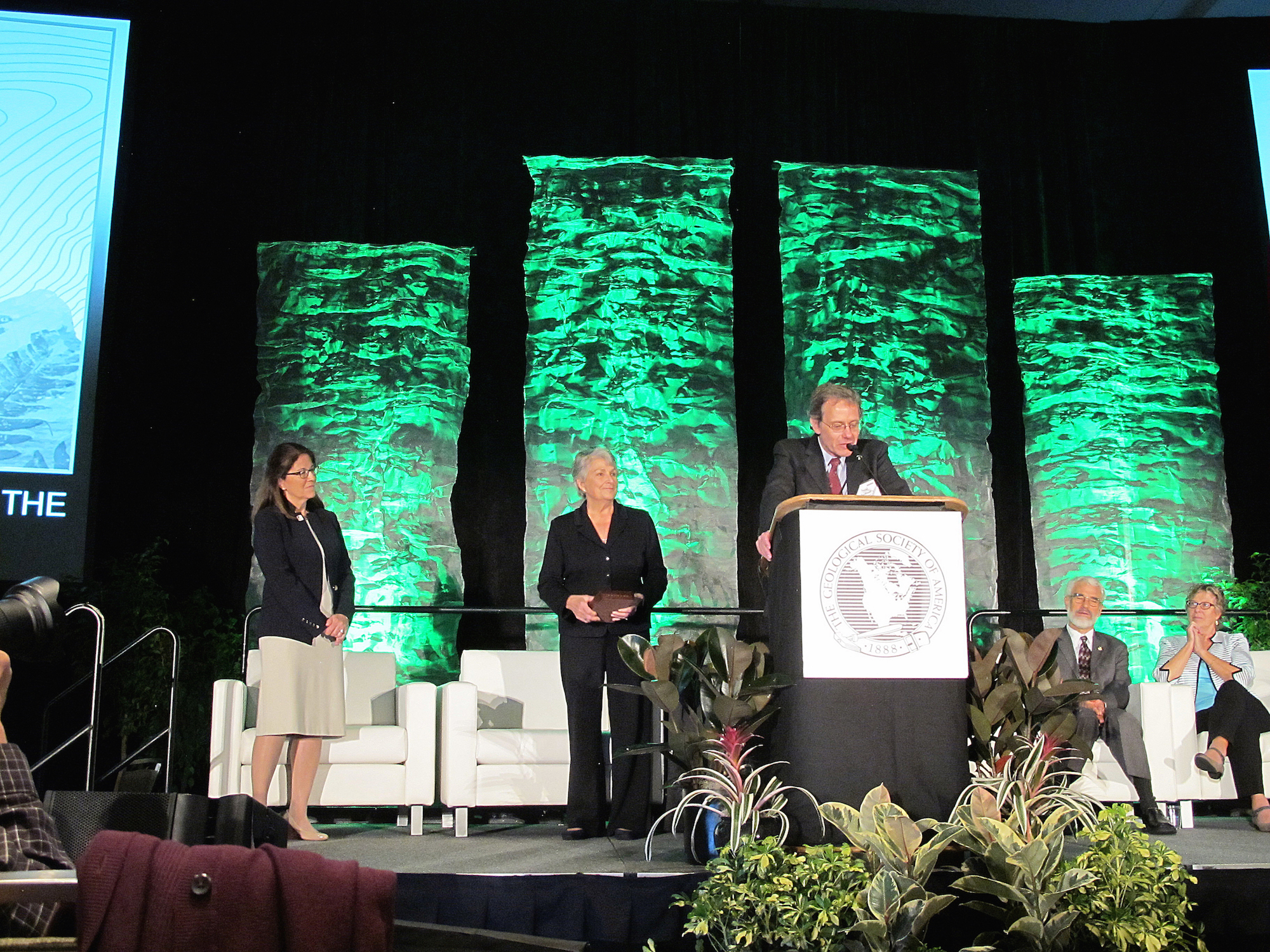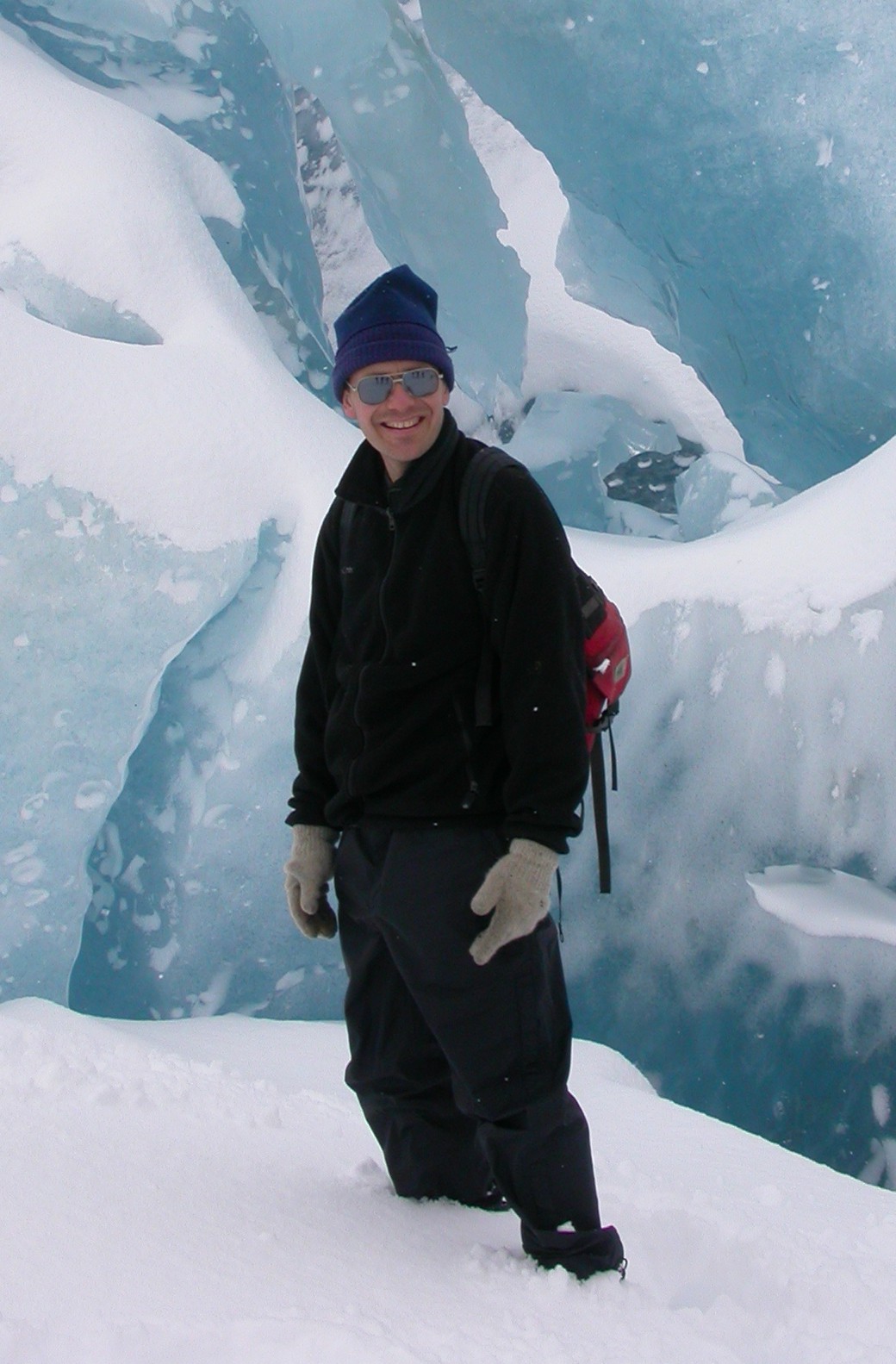Neal Iverson awarded Arthur L. Day Medal
Author: Amy Juhnke
Author: Amy Juhnke
Neal Iverson was honored with the Arthur L. Day Medal from the Geological Society of America at the Annual Meeting in Seattle on October 22.
Iverson, professor of geological and atmospheric sciences, received the prestigious honor based on his transformative work applying physics to the study of how glaciers move and shape landscapes.
Arthur L. Day, founding director of the Geophysical Laboratory of the Carnegie Institution of Washington, gave a donation to establish the award in 1948. The award recognizes outstanding distinction in the application of physics or chemistry to the solution of geologic problems.
“I feel very fortunate,” Iverson said. “It’s very humbling when I see the previous recipients of the award.”
Iverson’s work has applications for improving predictions of sea level rise.

(Contributed Photo.)
“Large portions of the two ice sheets on earth end not on land but in oceans,” Iverson said. “When glaciers slide over their beds unusually rapidly, ice is conveyed to the ocean more quickly. Icebergs are produced more quickly as a result. Those icebergs melt in the ocean and raise sea level.”
Predicting how fast glaciers will move in the future is difficult and is currently the biggest reason for uncertainty in predicting sea level rise.
Iverson has contributed to a better understanding of glaciers through fieldwork in Iceland, Norway, Denmark and Sweden as well as through building unique equipment to study processes at the beds of glaciers experimentally. He built a glacial sliding simulator, a machine over nine feet tall with a hydraulic press that can put as much as 170 tons of force on a ring of ice.
“It’s allowed us to approach the problem of how glaciers slide in a novel way,” Iverson said.
His goal is to use experimental and field data to provide better, simpler equations that are more accurate for ice sheet modelers. A large amount of data is needed to fine-tune models due to the variety of materials and processes at glacier beds and the unpredictable ways energy is dissipated there.
“To make good geoscience models you have to bring lots of data collection into it,” Iverson said. “Any kind of mathematical model involves some generalization, and to keep those generalizations in line with the complicated data we gather is really the most challenging part.”

Peter Moore, adjunct assistant professor of natural resource ecology and management and a prior Ph.D. student of Iverson’s, nominated Iverson for the award.
“Neal sees weaknesses or gaps in the prevailing understanding of earth surface processes and—because of his experimental approach—he’s able to do more to truly close gaps or fortify weaknesses than most of his contemporaries,” Moore said. “And because he communicates clearly, colleagues trust his work and in many cases rely on it.”
Besides helping to develop better models of glacier flow, Iverson’s work also contributes to a better understanding of the formation of glacial landscapes.
“The most spectacular landforms on earth — the Himalayas, the Alps, the Rockies and places like Glacier National Park — those are a consequence of how glaciers have interacted with the rocks and sediments beneath them,” Iverson said.
“Nearly all of Iverson’s colleagues say ‘his research quickly becomes the solid foundation upon which subsequent advances in glaciology, glacial geology, and geomorphology are built,’” Moore said.